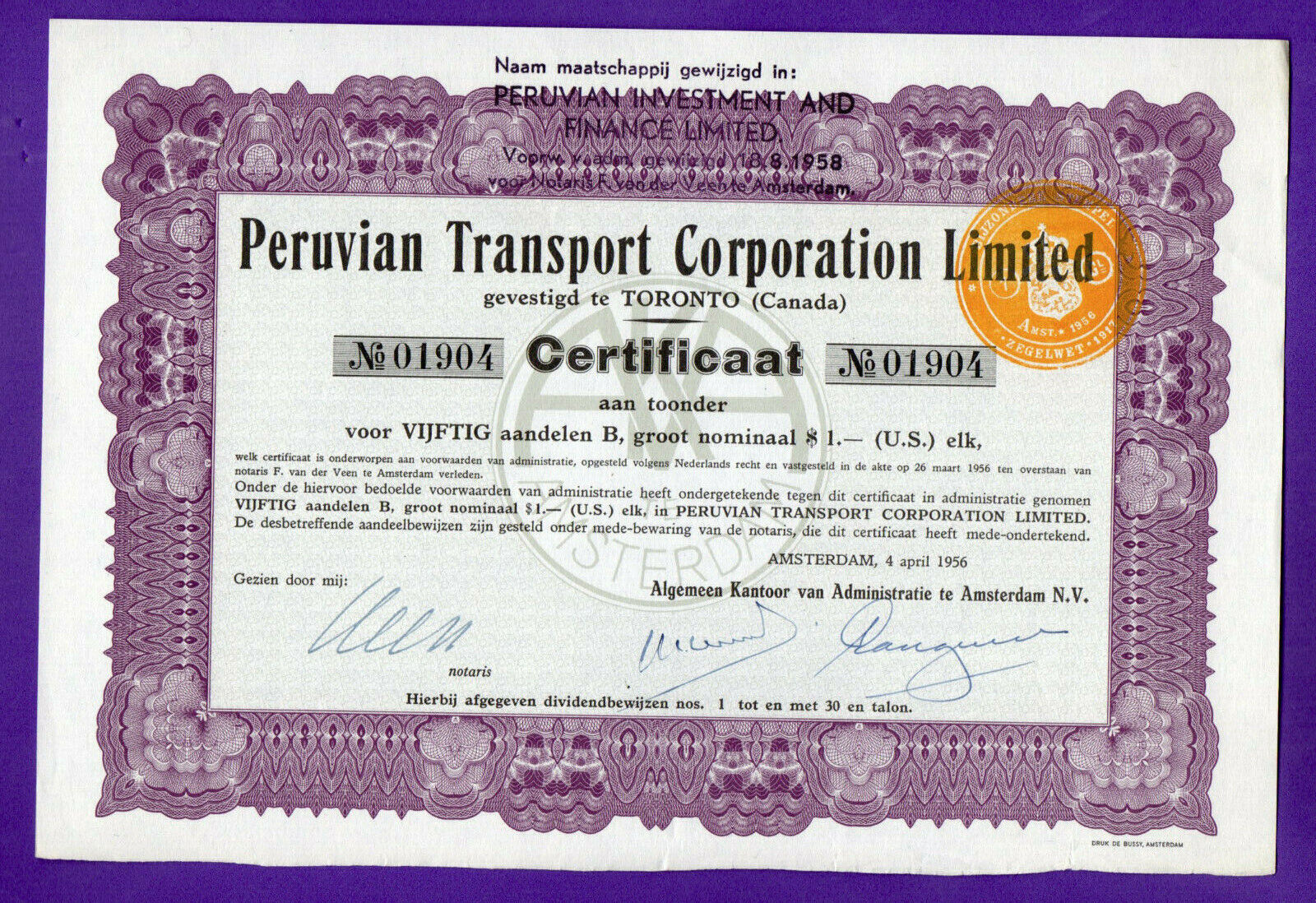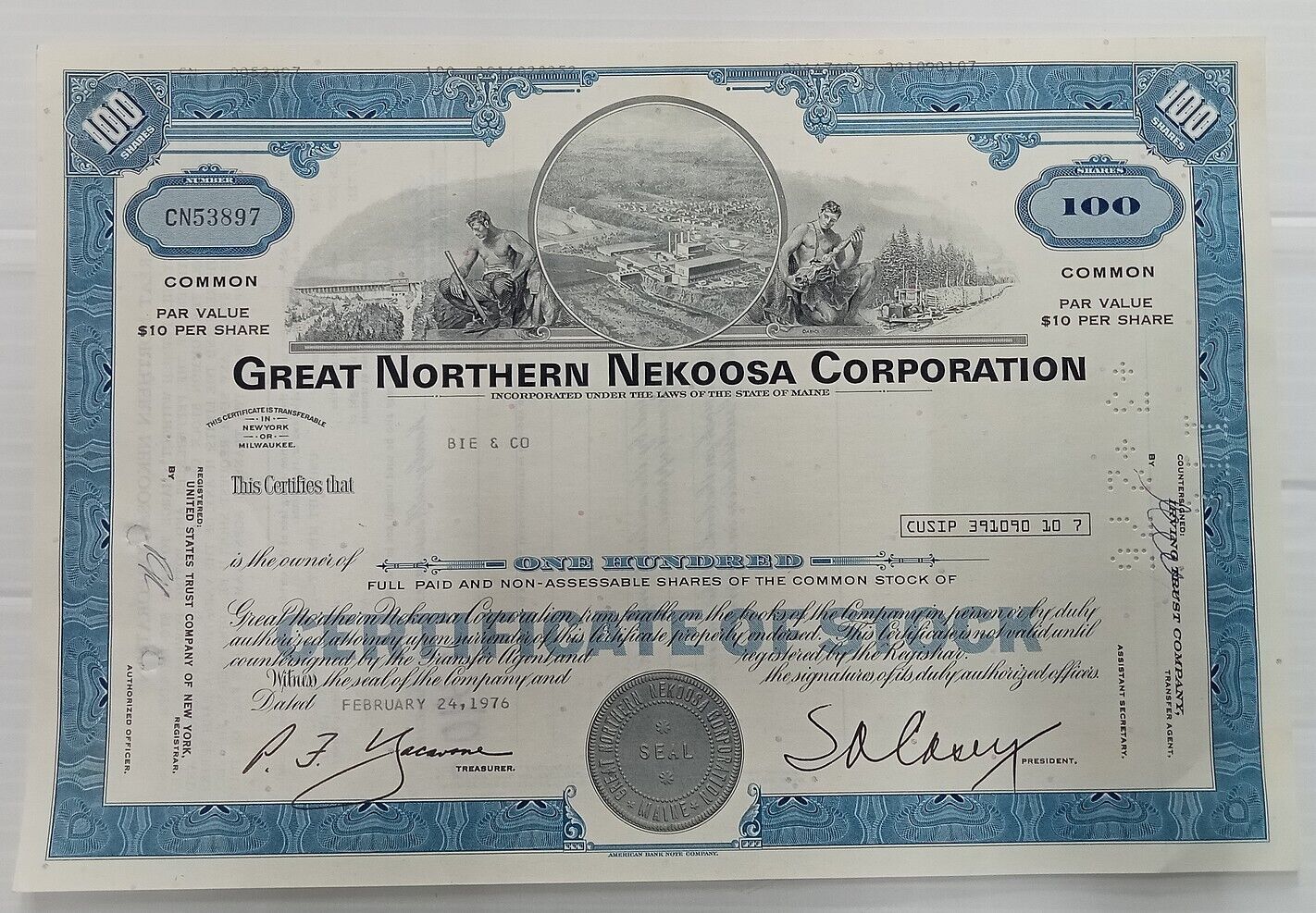-40%
Bush Terminal Company Stock Certificate
$ 3.16
- Description
- Size Guide
Description
Product DetailsBeautifully engraved antique stock certificate from Bush Terminal Company dating back to the 1930's and 1940's. This document, which carries the printed signatures of the company President and Treasurer, was printed by Quayle & Son and measures approximately 12" (w) by 8" (h).
The vignette features steamer at a dock along with a train and a truck.
Images
The images presented are representative of the piece(s) you will receive. When representative images are presented for one of our offerings, you will receive a certificate in similar condition as the one pictured; however dating, denomination, certificate number and issuance details may vary.
Historical Context
In 1903, Irving T. Bush, incorporated the Bush Terminal Railroad to serve his 200 acre industrial park that he had started to construct in 1900 on the waterfront in . He constructed 15 industrial lofts - six to eight stories in height.
His was a great success - it needed eight steam and another six electric ones to serve all of the customers. One of the biggest customers turned out to be an interchange partner - the South Brooklyn Railway.
One of the ’s more impressive operations, was the company’s single float . The plan of the for handling freight included a contract that almost entirely removed from the streets the large double-team trucks of the , which thundered through the city streets early in the evening on their way to the milk depot in and returned in the early morning hours with the , which were then loaded on single-horse wagons and distributed to households. The BRT decided to that the milk to would be floated by the Bush Terminal Company to South Seventh Street, Brooklyn, where the cans were transferred to the cars of the Brooklyn Rapid Transit Company and transported by the latter to the several distributing stations of the Bordon Company throughout the city. At the time, the wagons making the trip to Jersey City had to cross the over the East River, cross , and then cross the Hudson by ferry to New Jersey.









